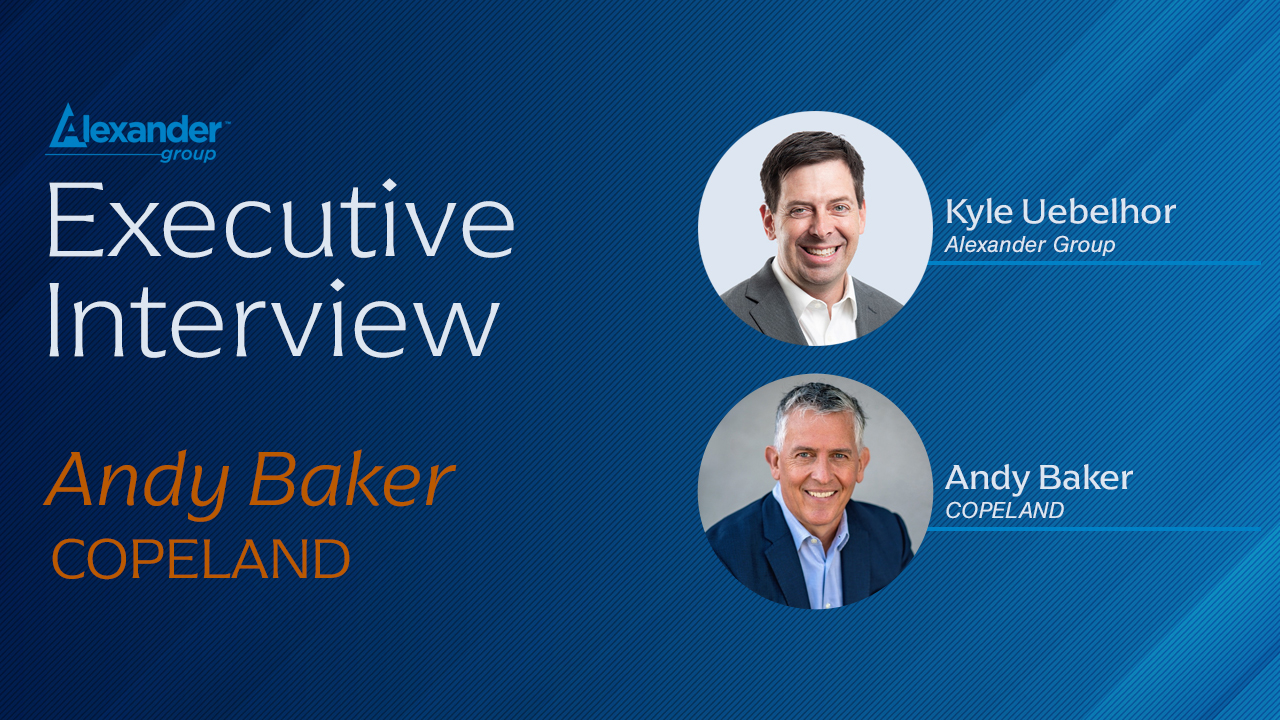The Next-Generation Commercial Team

The next-gen commercial team attracts employees by creating purpose.
Embedding an Ethos
Everyone sells. But truly successful companies combine strong ethos, job-appropriate skills and belief in both the customer and the greater good.
Alexander Group’s recent visit to Howden, a global provider of mission-critical air and gas handling products, proved this point. While touring the production floor, our young tour guide turned out to be an employee intent on showing us not only what they made but how Howden’s products positively impacted the environment.
The tour leader’s passion was infectious. He focused on the innovative solutions they produced and the value their products and services offered to customers. He was a salesperson in a hardhat and steel-toe boots. Our tour revealed that the company instilled a customer-first philosophy, firmly embedding the belief in the hearts of their employees at every level of the organization.
We wondered how such a young man could have so thoroughly embraced the Howden ethos. “I started as an apprentice with the company eight years ago,” said the twenty-four-year-old. At the young age of sixteen, he started learning life skills that would change his life and the lives of his customers.
Beginning with an entry-level job, he rose through the ranks on the shop floor. He learned not only job-related skills but also that the company had a higher purpose than just making money. That vision instilled a passion for customers and making a difference in the world. This apprentice and graduate program with seventy plus current trainees worldwide is an enduring pillar of Howden’s ESG program. According to Stuart Dalgleish, Howden’s CHRO, the program allows the company to tangibly invest in their communities, promote social mobility and support a diverse work environment.
Purpose and Profits
Those who succeed know selling to customers is not limited to the sales team. A purpose-driven company practices its resolve in every role by connecting the dots so everyone in the organization understands how they add value. Developing an unwavering commitment requires companies to create a rich, diverse employee experience that makes everyone want to participate in a customer-first (not necessarily product-first) experience.
The next-generation commercial team attracts, develops and retains employees by creating an employee experience rooted in purpose, not just profits. Leaders are responsible for committing to and consistently communicating a relatable purpose that every employee understands. That commitment must provide value for the customer and the community or society at large.
Salesforce tested the link between employee experience and customer experience on revenue growth. They found that 89% of revenue growth leaders reported that happy employees (EX) resulted in happy customers (CX). Companies with high CX and EX reported faster revenue growth, as much as 1.8x those companies with low CX and EX.
The future of the commercial team is not only that everyone sells, but everyone feels equipped, supported, trained and motivated to sell.
Career Mobility Supports Purpose and Engages Employees
The Bureau of Labor Statistics reports that the average tenure for all employees is approximately four (4) years. However, that tenure declines to 2.8 years for employees aged 25-34 and skyrockets to 9.9 years for those aged 55-64. But we have yet to fully realize the impact of the Great Resignation on tenure. More than ever before, employers must keep people interested in their current job while offering future options to stay within the company. A clearly articulated career path shows how employees can continue to add value throughout their careers, enriching the employee experience.
It has never been more critical to develop a winning career strategy that includes:
- Job competency models: Every job is clearly defined, including the skills and outcomes required to succeed in each role.
- Job leveling: Every job description has required competencies, education and work expectations to meet expected outcomes.
- Pay leveling: Transparent compensation for each role sets earnings expectations, allowing employees to compare positions inside and outside the company.
- Differentiated career paths: Companies outline the opportunities for advancement within and across job families, supporting HR and managers to coach employees towards future goals.
- Training, coaching and communication: Each role receives appropriate training to enhance skills. In addition, coaching and mentorship opportunities ensure success in each role. Finally, a strategic communication program shows employees how to take advantage of educational opportunities.
Companies that embrace career mobility strategies are more competitive when their employees enjoy their work and get paid competitive wages. Additionally, in an era of fierce competition for employees, it is essential to use benchmark data to validate that jobs and compensation reflect market realities.
A purpose-driven company prepares all employees to excel in their jobs by enhancing the employee experience and creating a win-win opportunity for customers, their workforce and the organization.
Anomaly or Norm?
Engaged employees have a positive economic effect on the organization. First, a purpose-driven organization ensures that customers keep getting value from products and services, increasing revenue. Second, less turnover results in a lower cost to serve and avoids rehiring and retraining expenses.
Additionally, as a “silver tsunami” shrinks the experienced workforce, a comprehensive career mobility strategy develops employees more quickly and efficiently, ensuring that customers receive ongoing value.
The next-generation commercial team grows revenue by focusing on customers and employees. Employees who like their job and believe in what they are doing stay in their careers. And employers that offer career mobility strategies grow employee experience, customer experience and profits.
At the end of our visit to Howden, we asked Dalgleish if they had issues attracting or retaining employees. The answer was a firm “no.” He further explained, “At Howden, we know that having a highly engaged workforce is critical to our success. That’s why our commitment to being in the top 10% in employee engagement compared to our peers makes complete business sense. We work hard to ensure our population understands and believes in our mission. And we measure that twice a year to ensure we’re listening and staying connected. Employee Engagement is, and will be, a continual focus for us at Howden.”
Our tour guide was not an anomaly but reflected the norm of an educated, engaged and driven workforce, proving that everyone can sell when the organization creates value for customers and employees and demonstrates how employees can grow and personally contribute to that vision.

Want More?
For more information on how Alexander Group can assist you with your employee engagement program, please contact a Manufacturing and Distribution practice lead.



